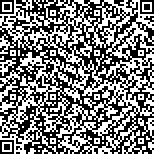| This article has been:Browse 904Times Download 2036Times |

scan it! |
|
|
| DOI:10.13522/j.cnki.ggps.2023453 |
|
| Effect of drip irrigation amount on growth, yield and water use efficiency of spring wheat in northern Xinjiang |
|
ZHANG Zhao, HUANG Chao, FAN Yi, GUO Xiang, GU Songhua, CHE Hongbing, CHEN Haiqing, LIU Xuchen, LIU Zhandong
|
|
1. Xinjiang Bozhou Irrigation Experimental Station, Bozhou 833400, China; 2. Farmland Irrigation Research Institute, Chinese Academy of Agricultural Sciences, Xinxiang 453002, China; 3. Western Agricultural Research Center, Chinese Academy of Agricultural Sciences, Changji 831100, China; 4. College of Water Resource and Architecture Engineering, Tarim University, Alar 843300, China
|
| Abstract: |
| 【Objective】Xinjiang in northwestern China is scarce in freshwater and commonly uses drip irrigation in its agricultural production. In this paper we study the effect of irrigation amount on growth, yield and water use efficiency (WUE) of spring wheat in the north of Xinjiang.【Method】The experiment was conducted in a field with the No. 6 variety used as the model plant. During its growth period, the crop was irrigated six times with irrigation amount in each time being 30, 37.5, 45, 52.5, 60, 67.5 mm, respectively. In each irrigation treatment, we measured the growth, yield and WUE of the spring wheat.【Result】Plant height increased with irrigation amount until the irrigation amount was 45 mm, after which a further increase in irrigation amount did not have a significant effect on plant height (P>0.05). The leaf area index (LAI) and the above-ground dry matter accumulation both increased with irrigation amount, but started to decline when irrigation amount exceeded 52.5 mm. The water consumption of the crop increased with irrigation amount, peaking when irrigation amount was 67.5 mm. The effective spike numbers, grain numbers per spike, 1000-grain weight, yield and WUE of the crop increased first and then declined as the irrigation amount increased. Among all treatments we compared, irrigating 52.5 mm of water in each of the six irrigations gave the highest yield and WUE, reaching 7 233.2 kg/hm2 and 15.23 kg/(hm2·mm), respectively (P<0.05). Regression analysis showed that the water consumption of the crop for achieving the highest yield and WUE was 520.8 mm and 462.7 mm, respectively.【Conclusion】For the spring wheat drip-irrigated in northern Xinjiang, irrigating six times with the irrigation amount in each time being 52.5 mm can give the maximum yield and WUE. It can be used as an optimal irrigation scheduling for spring wheat production in this region. |
| Key words: spring wheat; drip irrigation amount; water consumption characteristics; yield; water use efficiency |
|
|